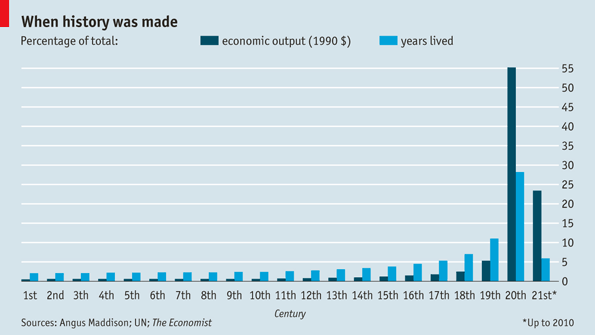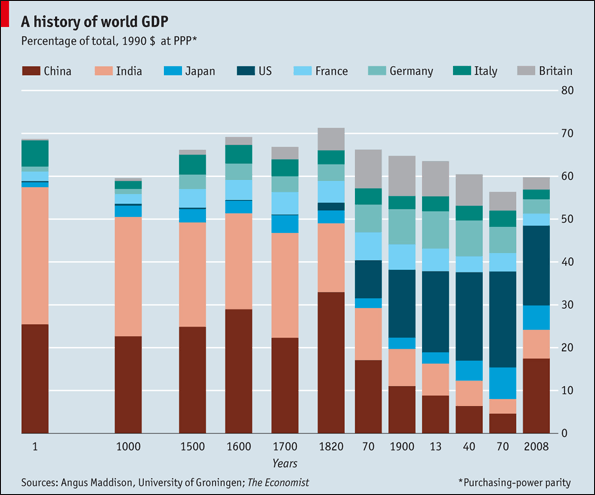(Click for Part 2) (Click for Part 3)
By Thomas Connelly
“In such condition there is no place for industry, because the fruit thereof is uncertain, and consequently, not culture of the earth, no navigation, nor the use of commodities that may be imported by sea, no commodious building, no instruments of moving and removing such things as require much force, no knowledge of the face of the earth, no account of time, no arts, no letters, no society, and which is worst of all, continual fear and danger of violent death, and the life of man, solitary, poor, nasty, brutish, and short.”
– Hobbes, Leviathan, XIII.9.
According to Hobbes, mankind has lived throughout history in an anarchic state, motivated to organize society by a fear of violent death at the hand of man or nature. When survival is the sole focus, there is little time or means to develop financial capital (savings) or human capital (education and technology).
Whether Hobbes is right or wrong, the history of economic growth and human material progress throughout tens of thousands of years of human existence echoes Qoheleth (author of Ecclesiastes) when he states in the Old Testament, “nothing is new under the sun.” Until the advent of gunpowder and the printing press, economic growth and human progress were largely static over nearly two millennia of recorded history.
Beginning in the late 1700s or early 1800s there was certainly something new under the sun: An unprecedented explosion of economic growth began, accompanied by an equally impressive leap in the human life span.
“When History Was Made”, courtesy of The Economist
Before that time, economic progress was almost non-existent. The average human life expectancy was in the mid-twenties. Indeed, the development of cities was actually a setback in the human experience, as more people moved from expansive country settings into crowded, filthy and unsanitary urban conditions.
By the early 1800s, economic growth had accelerated in northern Europe, and later, the US, to rates that we are familiar with today. At the end of the 1700s, the best estimate we have of the aggregate of world material output is around $2.5 trillion in 1990 dollars; at the end of the 20th century it was in excess of $55 trillion in 1990 dollars. In the first decade of the 21st century, we have already produced the equivalent of 25 percent of the previous century’s output. Economic growth and prosperity is a relatively recent phenomenon in human history. We have no assurances, outside of our faith in human ingenuity and curiosity, that it will continue.
Underneath the numbers denoting rapidly growing affluence lies another trend. Even as economic growth accelerated, the share of the economic pie and its annual growth started shifting abruptly from India and China, who comprised 45-60 percent of world economic output, from the beginning of the first millennium to 1820 – first to northern Europe, later joined by the US. By 1970, India and China’s share of world output had plummeted to less than 10 percent of the global economy.
“A History of the World GDP”, courtesy of The Economist
The US had largely made up the bulk of the change, joined by newcomer Japan and the rest of Europe. The ascendancy of Rome was small compared to the Indian and Chinese civilizations. The wealth of Rome in its decline was replaced by the Italian trading cities, the French monarchies and the Teutonic states. The British Empire began flexing its economic muscles in the 1600s, peaking just before World War One. It in turn gave up its relative share of economic growth, along with Germany, to another emerging market, the United States in the 1800 and 1900s. Economic leadership and growth has changed hands frequently over human history, and being prepared for these changes can be profitable.
Next month, Part 2: Emerging Market Countries
Disclosure: Please remember that past performance may not be indicative of future results. Different types of investments involve varying degrees of risk, and there can be no assurance that the future performance of any specific investment, investment strategy, or product (including the investments and/or investment strategies recommended or undertaken by Versant Capital Management, Inc.), or any non-investment related content, made reference to directly or indirectly in this newsletter will be profitable, equal any corresponding indicated historical performance level(s), be suitable for your portfolio or individual situation, or prove successful. Due to various factors, including changing market conditions and/or applicable laws, the content may no longer be reflective of current opinions or positions. Moreover, you should not assume that any discussion or information contained in this newsletter serves as the receipt of, or as a substitute for, personalized investment advice from Versant Capital Management, Inc. To the extent that a reader has any questions regarding the applicability of any specific issue discussed above to his/her individual situation, he/she is encouraged to consult with the professional advisor of his/her choosing. Versant Capital Management, Inc. is neither a law firm nor a certified public accounting firm and no portion of the newsletter content should be construed as legal or accounting advice. If you are a Versant Capital Management, Inc. client, please remember to contact Versant Capital Management, Inc., in writing, if there are any changes in your personal/financial situation or investment objectives for the purpose of reviewing/evaluating/revising our previous recommendations and/or services. A copy of the Versant Capital Management, Inc.’s current written disclosure statement discussing our advisory services and fees is available upon request.


